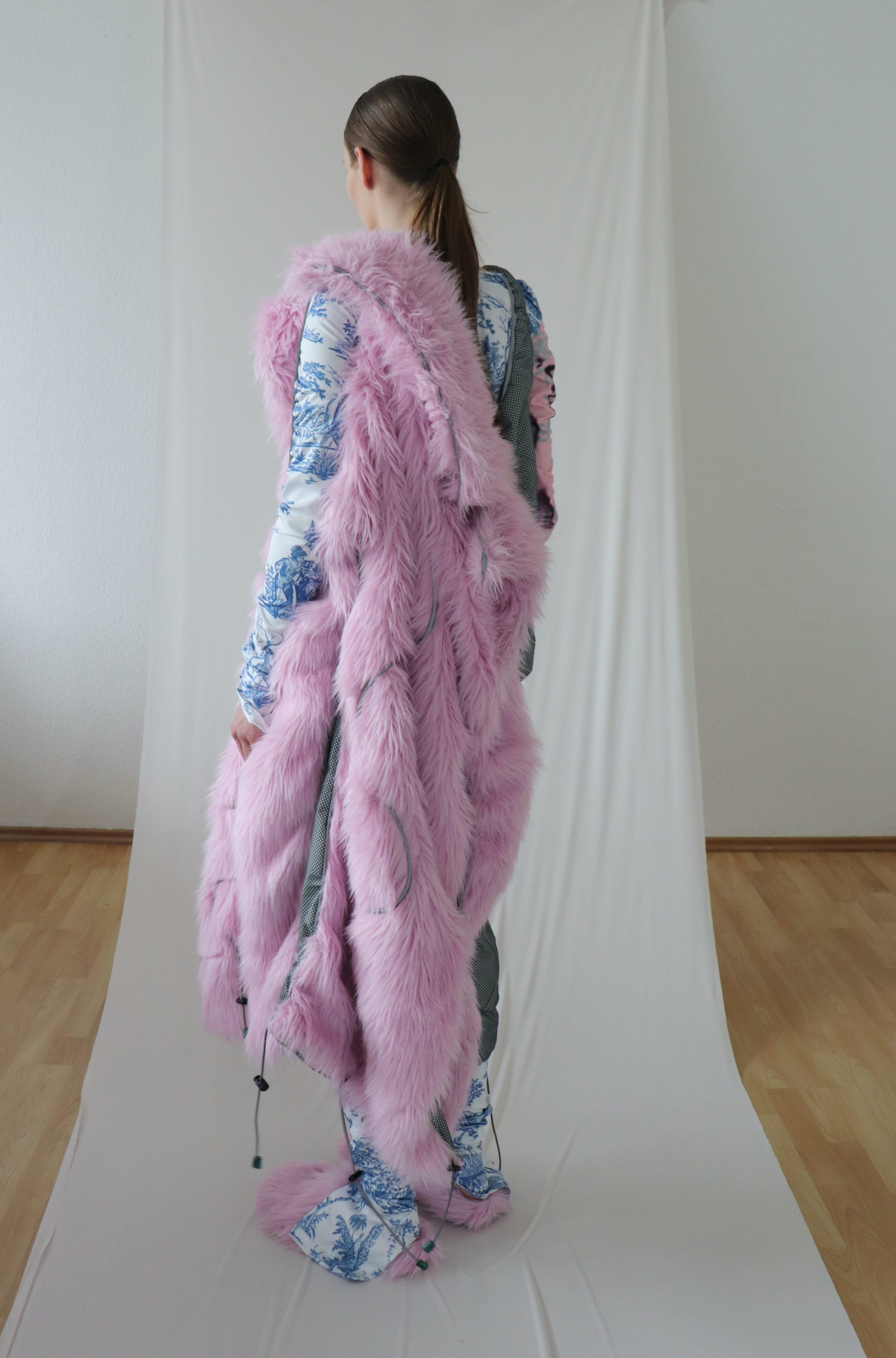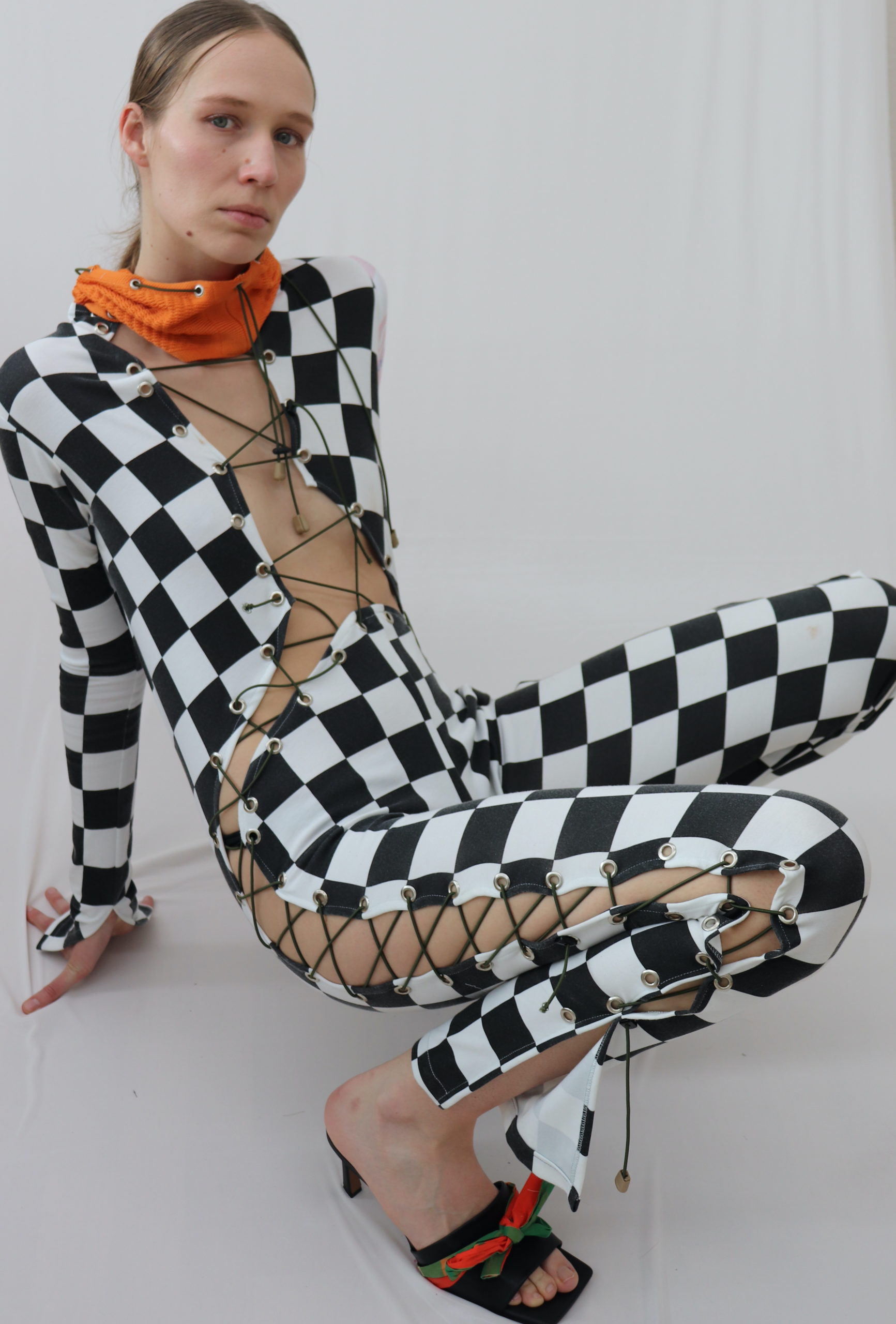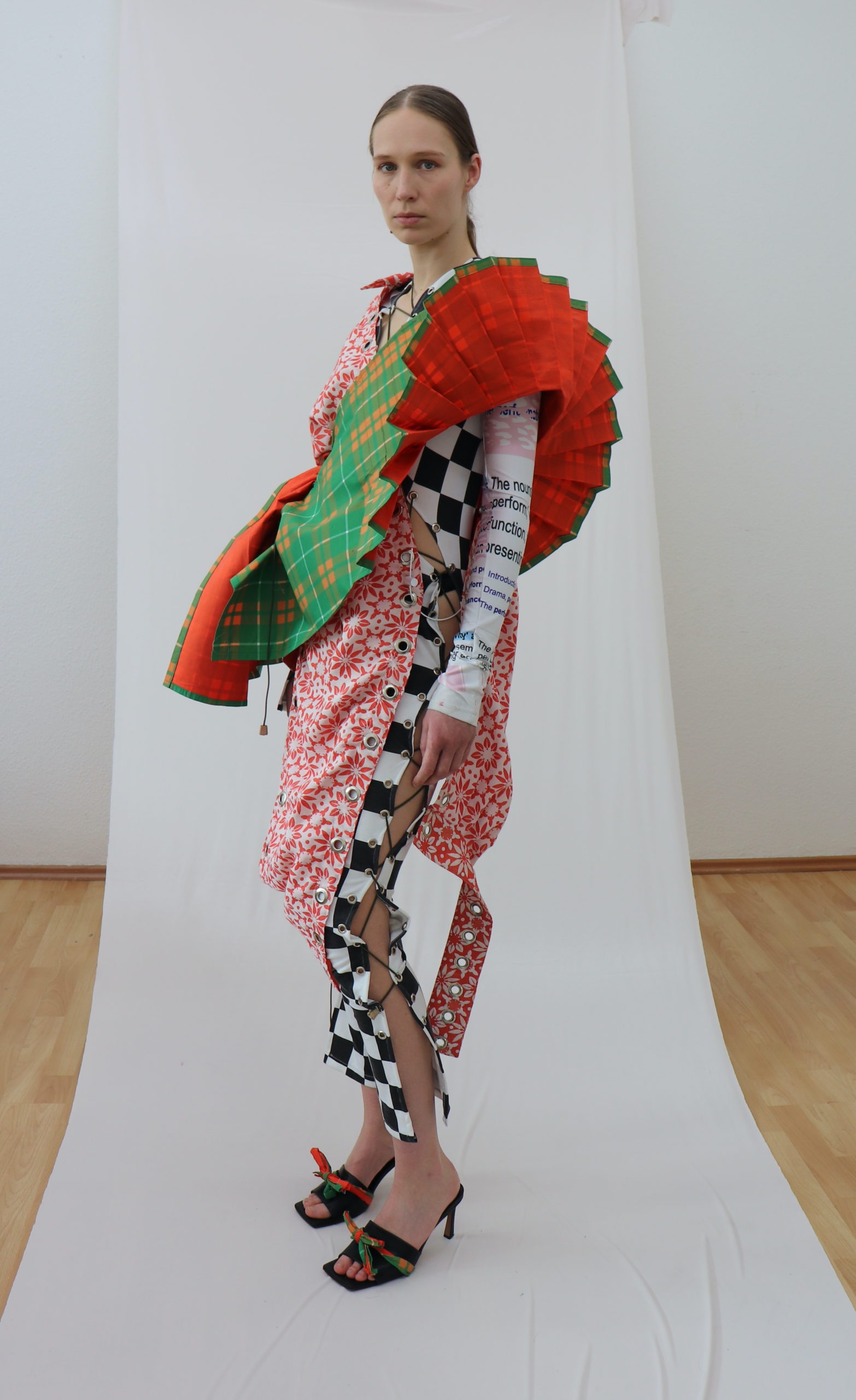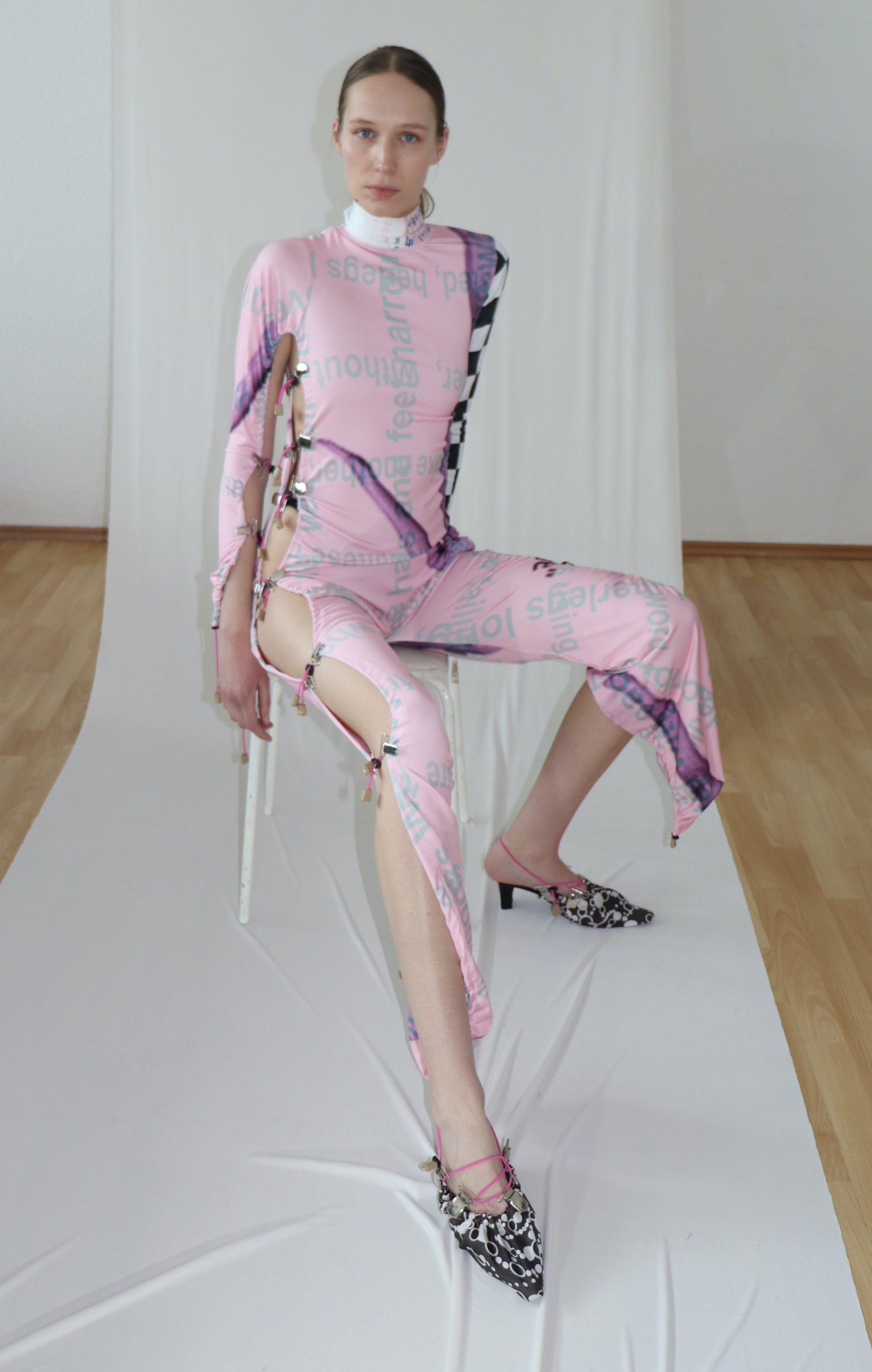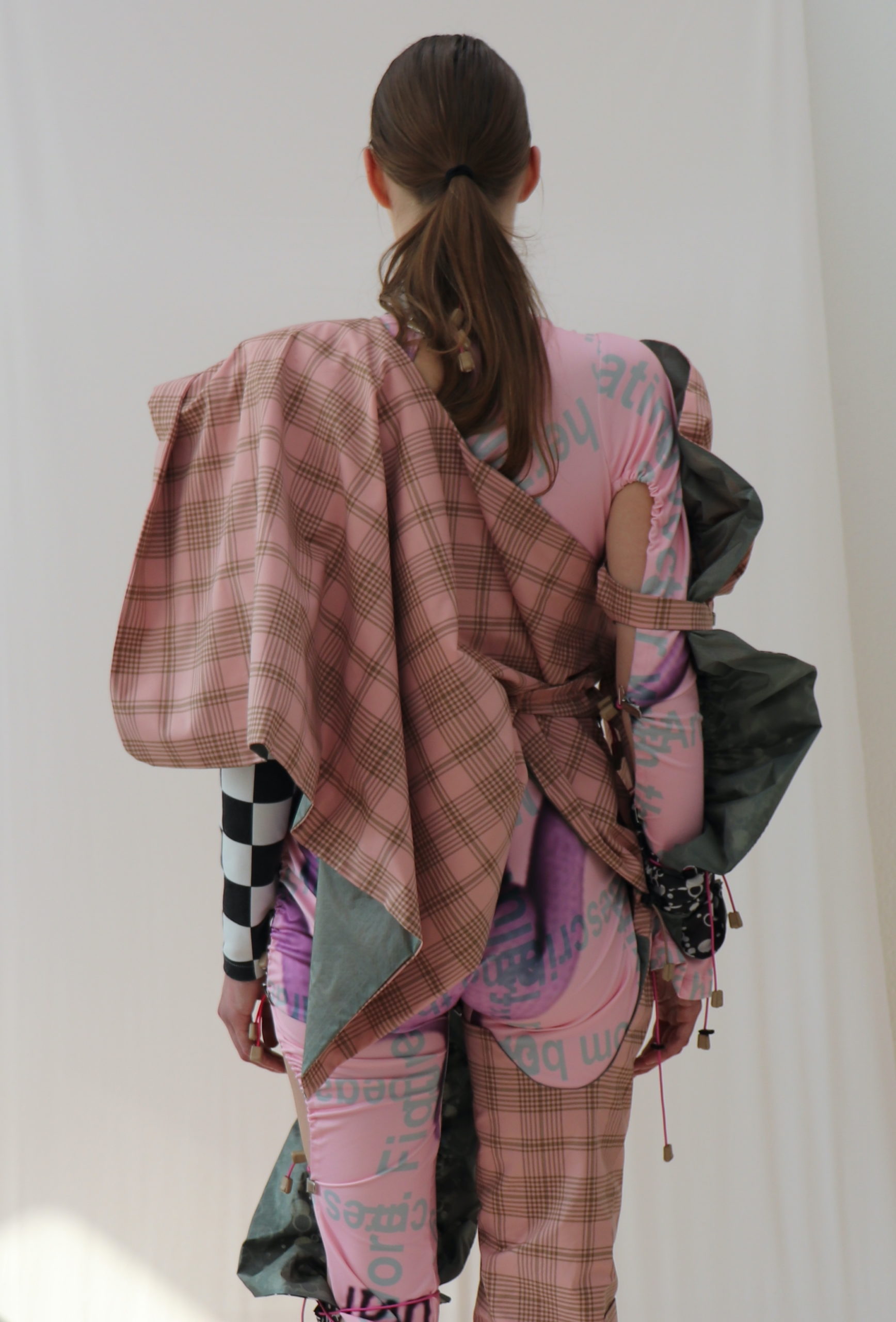Somatogenesis | 2021 | Ba Modedesign
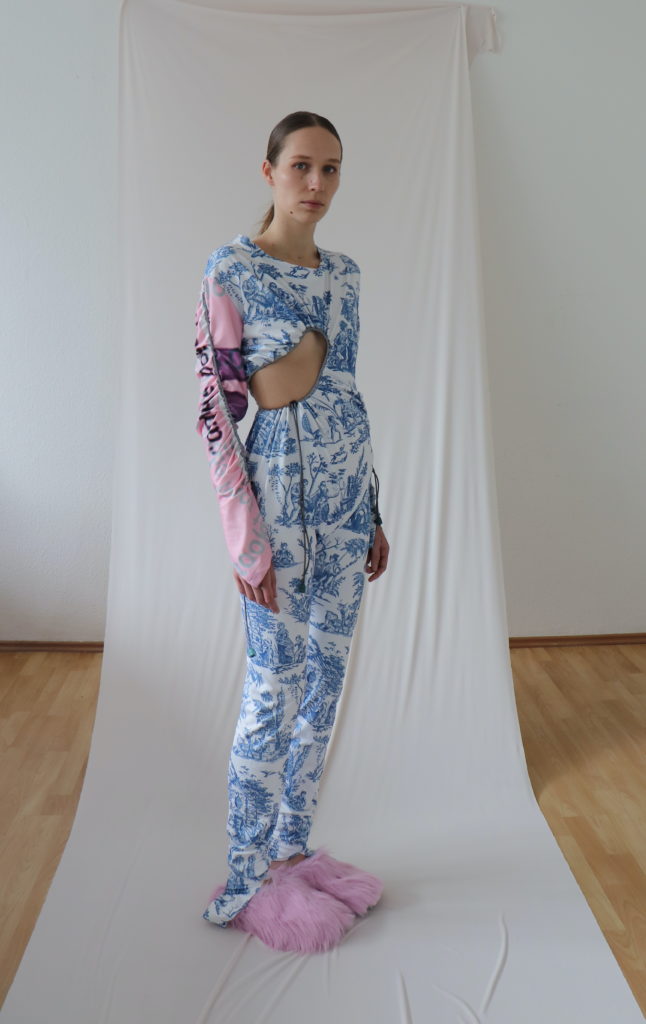
Somatogenesis
„Bodily experience is related to fashion’s effects on our bodies, body image, and identity. Fashion is a performative medium, a poetic expression in which the body becomes fictionalized.“
Die Wahl unserer Kleidung reproduziert nicht nur Geschlechtsidentität, sondern Mode selbst bewegt sich in einem binären System. Bestimmte weibliche Kleidungsstücke sind so konstruiert, dass sie laut Diane Crane ein Indikator für den Raum sind, den eine Frau im Gegensatz zum Mann einnehmen darf: „Women, as a consequence of their inferior status, are expected to occupy less space than men. This is seen in the expectation that clothing should be neat and well put together. Women’s legs are supposed to be closed rather than apart and arms should be close to the sides of the body.“ Nähte, Schnitte, Passform und Material haben eine direkte Auswirkung auf die Darstellung des Körpers und auf körperlichen Erfahrungen, wie beispielsweise Bewegungsmuster. Kleidung wird weitestgehend als statisches Produkt für Konsument:innen hergestellt, bei denen der Körper sich in erster Linie nach der Kleidung richten soll. Verändern sich körperliche Attribute, verändert sich die Kleidung nicht automatisch mit uns. Unter diesen Beweggründen liegt die Auseinandersetzung des Entwurfs auf performative Designansätzen als Methode, mit der Modedesign als etwas verstanden werden kann, die nicht nur Objekte, sondern auch Einstellungen und Kontexte umfasst, in denen sich Körper bewegen. Ein Schwerpunkt der Arbeit liegt darin, die Reproduktion von Körpern in der Mode zu beleuchten und neue Handlungsmöglichkeiten zu erforschen.
„Bodily experience is related to fashion’s effects on our bodies, body image, and identity. Fashion is a performative medium, a poetic expression in which the body becomes fictionalized. „
Not only the choice of our clothing reproduces gender identity, but fashion itself operates in a binary system. Certain female garments are constructed in such a way that, according to Diane Crane, they are an indicator of the space a woman can occupy compared to a man: “Women, as a consequence of their inferior status, are expected to occupy less space than men. This is seen in the expectation that clothing should be neat and well put together. Women’s legs are supposed to be closed rather than apart and arms should be close to the sides of the body.“ Seams, cuts, fit and material have a direct effect on the representation of the body and on physical experiences such as movement patterns. Clothing is largely manufactured as a static product for three dimensional bodies, that primarily should fit into the clothing. However, if physical attributes change, clothing does not automatically change with us. Among these motives, the design process of this project explores performative design approaches as a method within fashion design, that can be understood as something that not only includes objects, but also attitudes and contexts in which bodies move.
Created in Consultation with: Prof. Wowo (Waldemar) Kraus, KM Alexandra Börner, Dr. Renate Stauss
Credits:
Fotografie: Mia Alvizuri Sommerfeld
Model: Tanja Bombach
